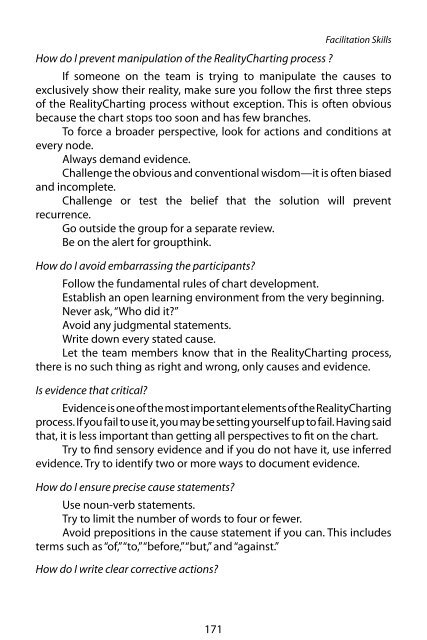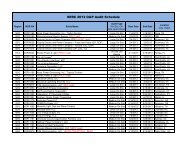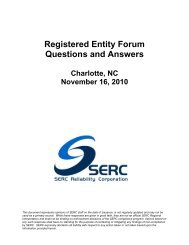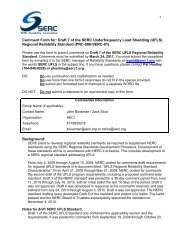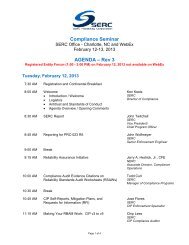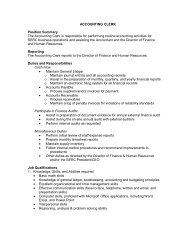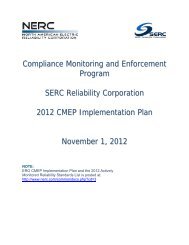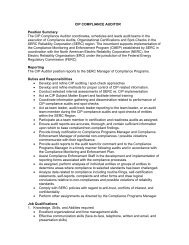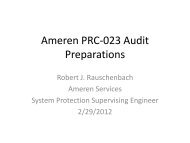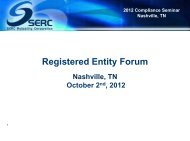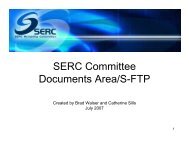RealityCharting e-book .pdf - SERC Home Page
RealityCharting e-book .pdf - SERC Home Page
RealityCharting e-book .pdf - SERC Home Page
- No tags were found...
Create successful ePaper yourself
Turn your PDF publications into a flip-book with our unique Google optimized e-Paper software.
How do I prevent manipulation of the <strong>RealityCharting</strong> process <br />
Facilitation Skills<br />
If someone on the team is trying to manipulate the causes to<br />
exclusively show their reality, make sure you follow the first three steps<br />
of the <strong>RealityCharting</strong> process without exception. This is often obvious<br />
because the chart stops too soon and has few branches.<br />
To force a broader perspective, look for actions and conditions at<br />
every node.<br />
Always demand evidence.<br />
Challenge the obvious and conventional wisdom—it is often biased<br />
and incomplete.<br />
Challenge or test the belief that the solution will prevent<br />
recurrence.<br />
Go outside the group for a separate review.<br />
Be on the alert for groupthink.<br />
How do I avoid embarrassing the participants<br />
Follow the fundamental rules of chart development.<br />
Establish an open learning environment from the very beginning.<br />
Never ask, “Who did it”<br />
Avoid any judgmental statements.<br />
Write down every stated cause.<br />
Let the team members know that in the <strong>RealityCharting</strong> process,<br />
there is no such thing as right and wrong, only causes and evidence.<br />
Is evidence that critical<br />
Evidence is one of the most important elements of the <strong>RealityCharting</strong><br />
process. If you fail to use it, you may be setting yourself up to fail. Having said<br />
that, it is less important than getting all perspectives to fit on the chart.<br />
Try to find sensory evidence and if you do not have it, use inferred<br />
evidence. Try to identify two or more ways to document evidence.<br />
How do I ensure precise cause statements<br />
Use noun-verb statements.<br />
Try to limit the number of words to four or fewer.<br />
Avoid prepositions in the cause statement if you can. This includes<br />
terms such as “of,” “to,” “before,” “but,” and “against.”<br />
How do I write clear corrective actions<br />
171


